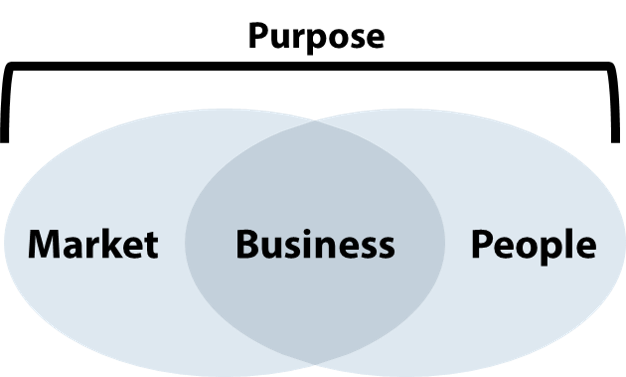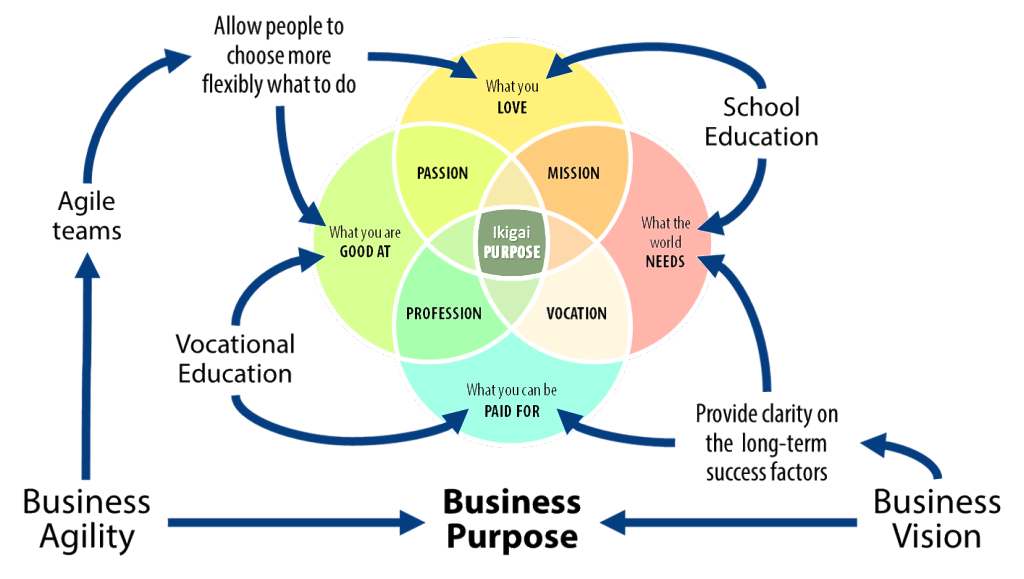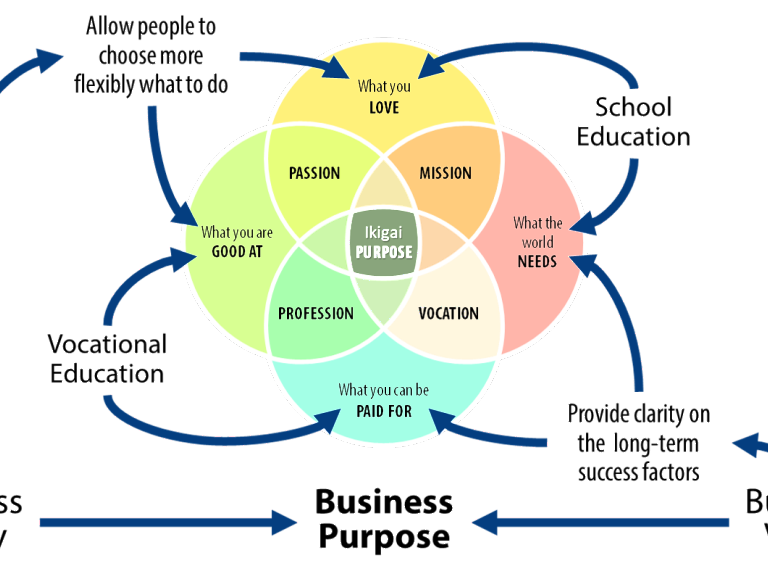Agile has moved out of software development in most organizations. As it enters mainstream and new domains people want to understand what agile can do for them. Often, their HR departments respond with training for Scrum and Kanban that focus on the WHAT and HOW of agile with a strong focus on software development. This can leave some wondering what it really means for them.
This challenge stems from the fact that ‘agile’ can mean so many different things on a broad business level. Agile is an adjective, not a noun. You don’t do Agile. You make something agile. What this means for ‘something’ and how to do it depends. Agile for IT, sales, marketing, HR, or R&D will all be different. IT also depends on the specific situation. Internally and externally. There is no cookie-cutter approach to business agility.
Even the best training initiative cannot address this and create enough momentum for the often heavy lifting required by shifting the ways of working to agile.
An agile transformation is an organizational change initiative that benefits from a powerful executive message that answers the WHY to create clarity and urgency: Why do we need to become more agile? Now and in the future? Where is it relevant? Where most urgent? What is our specific situation? What are the internal and external drivers and motivations?
In this article, I would like to share two approaches that I found useful in articulating and moderating starting with WHY and engaging senior business leaders.
Starting with the WHY of agile
Businesses exist to achieve market success by leveraging people. Traditionally, they organize work with hierarchies, fixed roles, and processes that define top-down and precisely to the level of an individual what business success means.

Increasingly, these old ways of working fail when dealing with accelerating VUCA, change and opportunity in the market. For continued success, businesses need to better leverage their most flexible asset: people. It takes people for a business to learn, adapt, and innovate. Machines cannot do this. Agile ways of working excel at bringing out the best of your people in dynamic market conditions.
From a leadership perspective, the WHY perspective on agile ways of working relates to business and people management. These are two avenues to follow when talking to executives about agile:
- Business managers want to understand the market side of agile, the vision, business case, and urgency.
- People managers want to understand the people side of agile and how it drives people performance.
Both approaches aim at relating agile ways of working to the contexts they are familiar with and avoid introducing new terms too early in the process that may distract and confuse. Agile ways of working require fundamental mind shifts that are not readily and intuitively understood. It takes time to sink in. Starting with WHY by relating an agile transformation to external realities makes facilitates this.
‘Starting with WHY’ was made popular by Simon Sinek. If you want to know more, watch his TED talk and read his book.
Approach 1: Developing the vision for an agile transformation

To lead into the discussion about the vision for agile I regularly ask people in my classes and talks to vote where they think their businesses are on the internal and external rate of change dimensions. Most people rate their organizations as struggling with keeping up.
This is a good start. Generally, this means that you should not have any issue with getting broad buy-in for an agile transformation. But agreeing on a general need for change does not equate wanting to change. You need to make it real, clear, and urgent. As an executive, you need to be on top of this.
An agile transformation starts with a bold vision that makes the case for internal change by calling out the external changes that require it and drives clarity and urgency.
A bold vision has three parts:
- A preferred future that calls out where opportunities and risks lie and where internal change is most needed
2. The business mind shifts needed to shape the preferred future
3. Key agile values needed to support making those mind shifts

Developing the vision starts with clearly calling out the preferred futures highlighting the areas where the organization struggles to keep up and the new opportunities that present themselves, for example, in technology, customers or geographies forming new ecosystems.
Mind shifts provide guidance on changed perspectives that enable conquering the blue oceans described by the preferred future. Examples include adopting a digital or mobile-first strategy, shifting to account-based value selling, or adopting a ‘WE’ culture.
Finally, values like trust, openness, respect, and transparency guide changes in our behaviours. They are a core element of an agile culture and, as part of the agile transformation, later detailed in the form of principles and practices, for example, in the area of leadership.
None of those three elements needs to make an explicit reference to agile ways of working. The vision can be defined purely based on the external and internal situations addressing the WHY, possibly touching on the WHAT, but not the HOW (which would be agile ways of working).
For example, the original manifesto for agile software development was created in response to the increasing rate of death march projects and project failures. It outlines the preferred future, mind shifts, values, and principles for software development. HOW to do it and which practices to apply was only later figured out.
A bold and specific vision for an agile transformation is critical. It makes it clear to everybody that they cannot continue with the old ways of working, that nobody can sit it out and need to act now.
To dive deeper into how to define an agile vision please refer to this example. A blueprint for a modern agile business manifesto that you can adapt to your own needs can be found here.
Approach 2: Creating the people foundation for an agile mindset
The second approach looks at “WHY agile” from the people perspective.
With other assets like finance and IT becoming increasingly accessible, affordable, and commoditized business success hinges more and more on access to talent.
Modern, diverse, and inclusive employers that hire for potential, instil purpose and offer agile work environments are more likely to win the global war for talent.
Agile, autonomous, self-organizing, and cross-functional teams provide work environments that allow staff members to focus on job satisfaction factors like the work itself and personal growth while reducing job dissatisfaction factors like micromanagement and politics.
As a consequence, agile ways of working improve staff engagement and happiness.
To put it simply, agile ways of working is common sense. It roots in established people management best practices like servant leadership, management by delegation, and building high-performance teams.
Agile ways of working energize people by giving them ownership and autonomy, focus them on collaborating to create external impact, serve customers, and generate value. Good people managers and leaders know it and do it. It’s common sense from the perspective of the managers and from the perspective of professional knowledge workers for many years already. Thousands of years, actually.
Agile ways of working made us humans successful as a race. The success story of humanity started with people working together to achieve something too big to achieve alone like hunting a mammoth, defending against enemies, or farming the fields. Building on each other’s individual strengths, trusting each other, and collaborating efficiently has always been our formula for success. We just seem to have unlearned it after 100 years of Taylorism.
To engage managers and staff on the soft side of agile, coaching, and workshops around the following topics are especially helpful:
- Adopting a servant leadership style that empowers people and teams to take ownership and encourages leaders to support and coach them. Servant leadership is the core element of an agile leadership transformation.
- Instilling a growth mindset focussed everybody on development and learning. It is the core of an agile people transformation.
In combination, both approaches will get you started with bringing the best out in your people.
Starting your agile transformation with WHY by creating a bold vision top-down and shaping an agile mindset bottom-up provides a powerful framework and will create strong momentum that will carry you far in your agile journey.
Most importantly, both approaches are complementary to each other. The vision benefits from the specific guidance of the mindset, the new perspectives provided by the mindset are given room to unfold in the new spaces created by the vision.
Connect your vision and people with purpose
Starting your WHY with your vision and people becomes really powerful once you connect them with purpose. This has two parts.

The first part addresses the corporate purpose. As part of your vision, you articulate why the world needs your business and how it contributes to making the world a better place.
The second part is personal purpose. Think of it as happiness. According to Ikigai, it is achieved when we combine what we love, with what we are good at, being paid for and the world needs. This his highly individual and your professional self will only contribute a part to this.

For a deeper look of the relationship of happiness, purpose and agile have a look at the article Combine purpose with agile to improve happiness.
If businesses can articulate and demonstrate the relationship between personal and corporate purposes, you will create a very powerful framework that drives alignment, commitment, and performance for your agile business.
Exploring further
Moving further into the direction of agile practices, here are some frameworks that you may find useful for developing a universal agile mindset:
- Modern Agile is a collection of values and activities to simplify and broaden the application of agile.
- Heart of Agile uses four circular, critical imperatives that amplify effectiveness, learning, and adaptation.
- Agnostic Agile is a collection of generic agile principles that can be applied generically.




